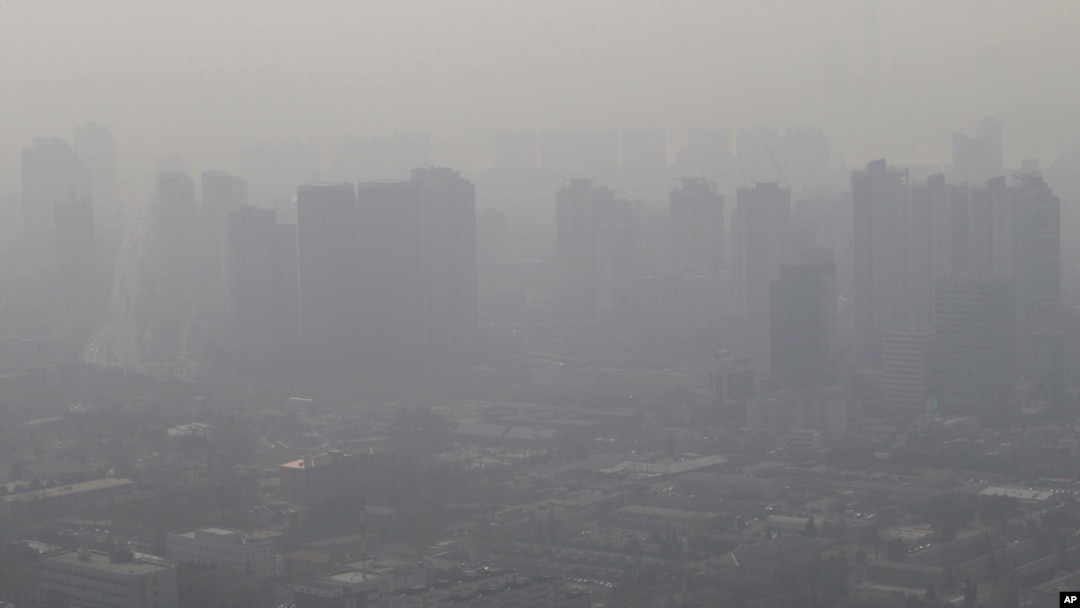South Korea is operating eight fewer coal-fired power plants this month as part of President Moon Jae-in’s promise to improve air quality in the country.
Since Moon took over South Korea’s presidential office nearly a month ago, the skies above Seoul have appeared much clearer compared to the weeks and months leading up to his election.
This is just a coincidence, said Yujeong Kim, a senior deputy director at South Korea’s Ministry of Environment. Every year at this time, she said, shifting winds improve air quality. And it’s too soon to measure the impact of the halt.
However, Kim said while this shutdown is only temporary, it’s a sign of Moon’s strong will to see the aging plants shut down forever.
A trial run
According to the environment ministry, the government chose June for the first halt because power usage is now down, compared to Korea’s sweltering summers and frigid winters.
Moon didn’t come up with the plan; it was announced last July by the environment ministry while former President Park Geun-hye was still in office. Moon, however, has made it his own.
The original plan was to shut down the 10 older plants by 2025, but Moon has moved up the timetable to 2022 when his term ends.
Kim said it’s difficult to shut down the plants permanently at this point because of the potential impact on consumers. But as Moon’s government increases the share of renewable energy sources, she said, it will be easier to take them offline.
It’s a tall order in a country that relies heavily on coal, which generates about 40 percent of South Korea’s electricity.
Moon hasn’t been clear about plans for expanding renewable energy sources, and it seems he’s already had to back off coal just a bit. Last month, his administration announced the 10 older plants would be temporarily halted in June, but only eight are offline. Kim said the reliance on two plants in South Jeolla Province was too heavy to include in the trial shutdown.
Measured steps
The June halt is the first of two trial periods to reduce air pollution, in particular fine dust particles known as PM 2.5.
The same 10 plants will be targeted for shutdown from next March to June. The longer period would give researchers a better idea of how much air quality improves.
Lee Ji-eon, a climate and energy coordinator with the Korea Federation for Environmental Movements, expects to see a positive impact by the end of this month. He believes the temporary shutdown next year will provide an even “more convincing” evaluation that coal needs to go.
Moon’s critics have pointed to the halts as vanity projects. He’s taken eight plants offline temporarily, but he hasn’t scuttled plans from the previous government to build 10 new coal-fired power plants. He has, however, agreed to reconsider their construction.
Lee is still optimistic about the new administration. He “highly values” Moon’s decision to rethink the new plants and says the new administration will be easier to work with. For one, Kim Hye-ae, a well-known environmentalist, has been appointed to the Blue House as a climate and environment secretary.
Holding onto coal
Critics share a great amount of concern about the potential economic impact of blocking the new plants from being built.
City councilors in Gangneung, a city along South Korea’s northeast coast, say a plant in their region that is already under construction will create jobs and boost the local economy.
The councilors, all members of South Korea’s opposition Liberty Korea Party, say about $4.4 million has already been spent to ensure a “clean” power plant. They say almost no fine dust emissions would enter the environment.
However, there will be increasing pressure on South Korea to wean itself off coal for renewable replacements as neighbors China and Japan are already making bigger strides in that direction. It’s also harder these days to blame Korea’s pollution problem largely on fine dust particles on China, as more studies show much of the pollution originates at home.


